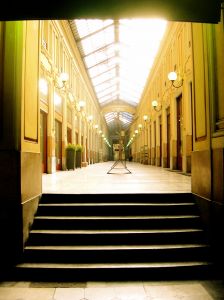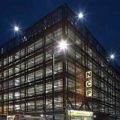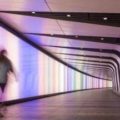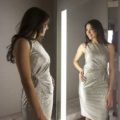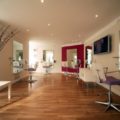The National Gallery are doing an interactive experiment to test people’s perceptions of colour using a prototype tuneable LED system.
The National Gallery has been converting it’s former tungsten lights to more energy efficient LED light bulbs for the last few years. As well as saving energy, LED lighting does not change colour temperature when it is dimmed whereas Tungsten does.
In the gallery, there is an automated system that activates the LED lighting in small increments according to the level of daylight coming through the skylights. The goal was to maintain a consistent amount of light throughout the gallery so that, no matter where they were in the gallery viewers would look at different artwork in the same level of light.
This is part of the Gallery’s Making Colour exhibition, which uses scientific methods to demonstrate artists use of colour and how they created the colours in these paintings.
The lighting experiment looks at the way the eye and brain respond to colour under different lighting conditions, and how this affects people’s perception of artwork. It uses computer-controlled LED light bulbs operating at varying wavelengths to simulate different lighting environments.
The way the experiments worked was members of the public watched the effect of the changing light on a painting and indicated their preferred lighting. The experiment also tested their perception of the colours as the lighting changed.
The experiment was developed with Anya Hurlbert, Professor of visual neuroscience at the University of Newcastle, who will analyse the results. Making Colour opened at the National Gallery in June and runs until the 7th of September.
The results of the experiment will be used to help improve the viewing experience of the public by adjusting the gallery’s illumination to suit particular paintings. Conservation scientist and lighting specialist at the National Gallery, Joe Padfield, told BBC Radio 4’s Inside Science: “If you have an exhibition looking at very old paintings that were always constructed using candlelight or daylight, you may want some kind of combination of both. If you have more modern paintings that were done under tungsten light or fluorescent, you may want to change the light.”
